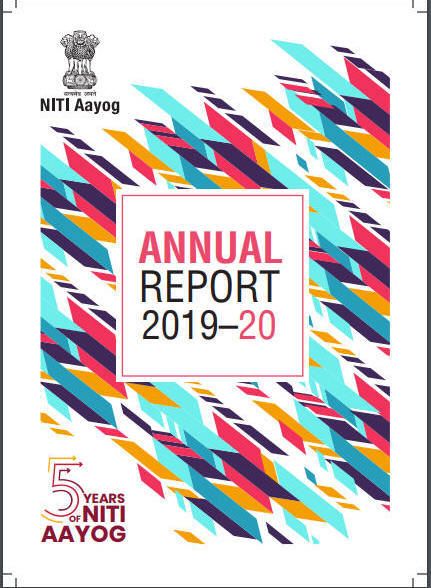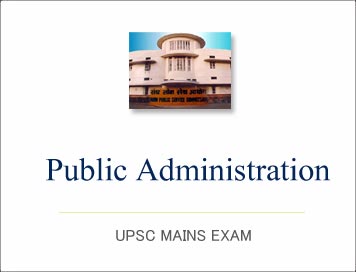
Sample Material of Current Public Administration Magazine
1. Accountability and Responsibility
Covid-19 pandemic has re-established primacy of government
In the years after the Second World War, financial crises were frequent. But
the current contagion has thrown many countries off guard. There is little or no
experience to guide countries on how to tackle such an epidemic. The only
alternative, widely adopted now, has been to suspend business as usual and
coerce citizenry to recede into the safety of their homes. Unfortunately and
expectedly, the suspension of economic activity has scathed sections of the
economy and the call to resuscitate the economy must be cognisant of these
costs.
It needs no expert to spell out that the shutdown of operations will have
serious economic ramifications. However, what remains unknown is the length and
the extent of the slowdown. Considering that companies make their production and
sales decisions in anticipation, order books of companies may in fact be more
severely hit in second quarter of the financial year 2020-21. This has a serious
implication for businesses. Large corporations with financial flexibility
stemming from internal resources, reserves and access to capital markets may
tide over the present liquidity strain as well as shift lines of production with
relative ease. Some companies may in fact turn to corporate debt market.
However, for companies that cannot access such markets, and the lack of
investors can create financial stress. On the other hand, small firms that have
wailed for assistance since the implementation of GST will have to go through
another round of re-organisation.
CLICK HERE FOR FULL ARTICLE (Only for Course Members)
2. Indian Government and Politics
The panchayati front: Tap potential of local self-government to fight
COVID-19
An unintended but welcome consequence of the struggle against COVID-19 is
that the “confrontational federalism” that has characterised the Centre’s
relations with the states, especially those run by non-BJP parties, is now
yielding under the pressure of the nation-wide crisis to an element of
“cooperative federalism” that was promised in 2014, and then reduced to a
“jumla” over the next six years. Repeated teleconferences between the prime
minister and the chief ministers has made a centralising establishment accept,
however reluctantly, that there is no way the COVID-19 situation can be tackled
except through a measure of cooperation between the Centre and the states, with
the Centre acknowledging the need to evolve solutions through a consultative
process involving the states and offering flexibility to states to adapt
guidelines to their respective circumstances, and the states accepting the need
for guidelines from the Centre along with adequate availability of funds to meet
this wholly unexpected and very expensive contingency.
What is still to be brought upfront and in focus is further devolution to the
panchayats and municipalities in keeping with the constitutional obligations
under the 73rd and 74th amendments, enshrined for the past quarter century in
Parts IX and IX A of the Constitution.
CLICK HERE FOR FULL ARTICLE (Only for Course Members)
3. Significant Issues in Indian Administration
Post-COVID economic models, rules of governance, must be bottom-up, not
top-down
The World is Flat, Thomas Friedman’s paean to globalisation, begins with a
golf game in Bengaluru with the CEO of a global Indian IT firm. When he saw
billboards of European and Japanese MNCs around the golf-course, Friedman had a
“eureka” moment. He called his wife in the US on his cellphone, and said, “The
world is flat”. When Friedman launched his book in New Delhi in 2005, India’s
Minister for Panchayati Raj, Mani Shankar Aiyar, disagreed with his view.
Jetsetters may be connected with the rest of the world, he said. However, they
don’t know what is happening in villages just 50km from where they live.
The sub-title of Friedman’s book was, A Brief History of the 21st Century.
The history of the globalisation he was celebrating has turned out to be very
brief. In 2020, the global COVID-19 pandemic has forced millions of Indians to
return to their villages. Jetsetters have been locked in their gated
communities. Global supply chains have been broken apart. People are scrambling
for essentials from local suppliers. The ideology of globalisation has hit
realities on the ground.
Recovery from COVID-19 is an opportunity to create economies that are more
resilient and fair. Three architectural principles must apply.
CLICK HERE FOR FULL ARTICLE (Only for Course Members)
4. Current Topic
Online classrooms: Covid lessons for public education
In a global market economy, the Covid 19, more than anything else has taught
people all over the world the perils of switching over to insurance driven
health care systems, where corporate giants and pharmaceutical companies might
call the shots on a nation’s priorities regarding public health. If pecuniary
interests and profit rule the pandemic, social justice and inclusivity might not
exactly get the prioritisation they demand, especially in many vulnerable
situations such as that of India where a vast majority of the nation is too poor
to afford private healthcare systems. This holds much relevance for public
education too.
Under the looming shadow of a raging pandemic, all schools and universities
in America, as in many other parts of the world, have switched on to the online
mode. What does this portend for a country like India where a large number of
students in our public educational institutions would neither have the
technology for this transition, nor the economic or social capital to bridge its
inequity? Would technologically driven classrooms end up furthering both social
and economic distancing, in the process unwittingly conjuring the remnants of
our half-buried feudal pasts to come back and haunt the portals of our learning?
For example, how would the daughter of a Dalit agricultural labourer from a
remote village in Attappadi overcome this hurdle? How would the digital divide,
exacerbated by class, caste, religion, gender, region, and rural/urban
locations, complicate the availability, accessibility and affordability of our
public education?
CLICK HERE FOR FULL ARTICLE (Only for Course Members)
5. Financial Administration
The making of a polite, people-friendly police
Every crisis throws up a challenge and is an opportunity to prove one’s
mettle. COVID-19 has posed a set of unique challenges for the Indian Police.
There had never been any such crisis before and the police manuals have no
standard operating procedures to deal with the situation. Hence, it is
heartening to see how the police rose to the occasion and not only met the
expectations of the people, but, perhaps, went beyond that.
The police were called upon to enforce the lockdown, which they did. In the
process, some excesses were committed. There were reports from different parts
of the country about people being beaten up with lathis, migrant labour being
ask to squat (murga position) in punishment etc.
However, the police leadership addressed these aberrations promptly. The
Indian Police Foundation, a think tank that studies issues concerning police,
prepared guidelines that the state police could follow. The advisories produced
visible results in no time. Policemen were seen not only enforcing the
regulatory orders, but also extending humanitarian assistance to those in
distress. At the local level, they coordinated with several NGOs like the
Vivekananda Kendra to distribute relief material among those hit by the closure
of economic activities. Patrol cars, whenever not otherwise engaged, were
utilised to transport the sick to hospitals or bring succour to senior citizens.
There were even cases of policemen giving their blood to patients in critical
condition. The tragedy is that even though they were performing duties under
such hazardous conditions, there were incidents of people attacking and throwing
stones at them. In Punjab, a crazy Nihang chopped off the hand of an ASI. The
stories are far too many to be reiterated here.
CLICK HERE FOR FULL ARTICLE (Only for Course Members)






